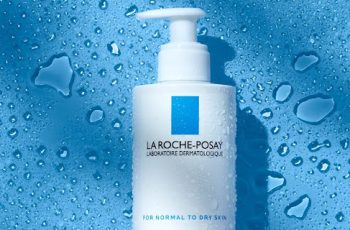
Antifungal Sprays Explained: Everything You Need to Know
Athlete’s foot and other fungal skin infections are definitely no fun. The itching, burning, and stinging that fungal skin infections can cause is extremely uncomfortable, and most people look for a way to get rid of them as quickly as possible. That’s actually a good thing—it’s important to treat them right away before they spread to other parts of the body. 1
One option for treating fungal infections is an antifungal spray. Do you want to know how these sprays work and if they’re right for your needs? We asked board-certified dermatologists Naana Boakye, MD, MPH, Todd Minars, MD, and Lisa Rhodes, MD, to tell us everything you need to know about antifungal sprays. Read on to find out what they had to say.
What are antifungal sprays?
Antifungal sprays are topical medications, which means they’re applied directly to the skin. They’re used to treat athlete’s foot and other common fungal infections. Typically, antifungal sprays contain an active ingredient, such as miconazole nitrate or tolnaftate, and many are available over the counter.
In addition to sprays, antifungal medications come in other forms, such as creams, powders, and pills. “Each treatment has its own pros and cons, but honestly, sometimes it’s just a matter of preference,” Minas says.
Who typically needs an antifungal spray?
Antifungal sprays are used to treat infections like athlete’s foot (tinea pedis), jock itch, ringworm (tinea corporis), vaginal thrush (Candida albicans), and some forms of dandruff, Boaky says. Sprays are often used to treat fungal infections on certain parts of the body, such as the hands and feet, she explains. Some people prefer antifungal sprays to other types of antifungal medications because they are easy to use.
Antifungal sprays also have a drying effect, Minas notes, while antifungal creams have a moisturizing effect. “Drying is good for treating common fungal infections because fungi love moist folds of skin, like tinea groin in the groin or athlete’s foot between two sweaty toes,” he says. “It would be even better if the antifungal medication not only killed the fungus but also helped dry out the moist area.”
How to use an antifungal spray?
Boaky says it’s a good idea to consult your doctor before using an over-the-counter antifungal spray so you can make sure you’re using the right treatment for your condition. Think of it this way: You may be convinced you have athlete’s foot, but it could also be something else entirely. So it’s best to consult your doctor before taking any medication. He or she may also recommend a prescription medication over an over-the-counter one.
Most antifungal sprays should be applied twice daily to clean, dry skin. Typically, you’ll need to use an antifungal spray for a week or two, but it may take up to four weeks. “Even after symptoms subside, you should continue to take the prescribed amount of medication to avoid a recurrence of the infection,” Boaky says.
Applying an antifungal spray is simple: Spray the medication directly onto the rash. Minas says you can apply the antifungal spray to unaffected areas of skin. He even recommends applying the spray so that it covers the affected area, or even slightly beyond it as you apply it.
When using an antifungal spray to treat athlete’s foot, apply a generous amount of medication to your entire foot, not forgetting the areas between your toes. “To prevent reinfection, sprays can be applied directly to the feet once a week or daily to infected shoes,” Rhodes explains.
Most antifungal sprays dry almost immediately, so you don’t need to wipe them off. “However, if the spray leaves your skin wet, simply wipe it off and blot any excess with a tissue,” Minas says. Don’t forget to wash your hands afterward.
Can antifungal sprays be used to treat acne?
Boakye tells us that despite what you may have heard on TikTok, antifungal sprays are not the best way to treat fungal acne. “I do not recommend using over-the-counter antifungal sprays to treat fungal acne,” she says. Since fungal acne is caused by the fungus Malassezia, the most effective treatment options are ketoconazole and itraconazole, she explains. (Conditions like athlete’s foot and jock itch, on the other hand, are caused by dermatophytes.2) “Topical treatments, such as creams, are usually preferred if you have fungal acne,” she says. “Depending on the severity of your acne, oral medications may be a better option.”
Who Should Avoid Antifungal Sprays?
If you are allergic to any of the ingredients in an antifungal spray, you shouldn’t use it. A doctor or pharmacist can help you find an alternative.
Boakye says that, aside from allergies, antifungal sprays don’t have many serious side effects. Minas explains that one of the main advantages of topical medications like antifungal sprays is that they don’t have many serious side effects unless you are allergic or sensitive to them. “In some cases, when you first use an antifungal spray, the treated area may be irritated and you may experience mild redness, burning, or stinging,” Boakye says. “However, if you experience a serious side effect, such as an allergic reaction, stop the medication and…contact your doctor immediately.”
If you have a cut on your skin, Rhodes recommends using an antifungal cream instead of a spray. This can help you avoid unpleasant sensations, such as burning and stinging.
Final Verdict
Antifungal sprays can be effective in treating athlete’s foot and other fungal skin infections, especially on the hands, feet, or in areas that are hard to reach with creams. Most antifungal sprays need to be used for about two weeks. Even if your symptoms subside, you must continue to use the medication as recommended by your doctor.
If you have questions about antifungal sprays or want to learn if they are right for you, make an appointment with a board-certified dermatologist.


